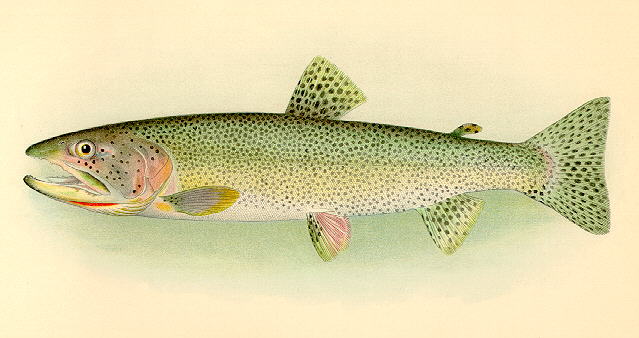| Salmonidae (Salmonids), subfamily: Salmoninae |
| 99 cm TL (male/unsexed); max.weight: 19 kg; max. reported age: 11 years |
|
demersal; freshwater; brackish; marine; depth range 0 - 200 m, anadromous |
| Eastern Pacific: northern parts of Prince William Sound, Alaska, south to the Eel River in northern California, USA and is found in most streams emptying into the Pacific.
Widely introduced into various streams and lakes within its natural range, as well as into a few lakes in eastern North America. In some streams it may be the most numerous sport fish present, while other streams support only small populations. At least 14 subspecies have been historically recognized (Ref. 5723). |
|
Dorsal spines (total): 0-0; Dorsal soft rays (total): 8-11; Anal spines: 0-0; Anal soft rays: 8-12. Color is variable. Generally dark green to greenish-blue on back, olive-green on upper flank, silvery on lower flank and belly; flanks spots below lateral line are more numerous anteriorly; irregular spots on dorsal, adipose and caudal fins and the anal, pectoral and pelvic fin bases; gill covers are pinkish. Those found at sea or recent migrants to freshwater are silvery with a bluish back, yellowish lower flanks and fins, and sparse spots. |
| Prefers relatively small streams, with gravel bottoms and gentle gradients. Spawning adults migrate from the sea into streams to spawn (Ref. 27547). The young fish usually stay in the stream for a year or two before entering the sea, but some populations never got to sea at all. In rare cases, some individuals of sea-going populations, may remain in fresh water for as long as eight years (Ref. 28866, 28869). Feeds on small fishes, crustaceans, and insects (Ref. 4925). The flesh is orange-red and of excellent flavor (Ref. 27547). Utilized fresh and eaten fried, broiled, and baked (Ref. 9988). This species does not compete well with other fish, tends to hybridize, and is unable to withstand fishing pressure = depletion of stocks. |
|
Not Evaluated (N.E.) Ref. (130435)
|
| harmless |
Source and more info: www.fishbase.org. For personal, classroom, and other internal use only. Not for publication.

